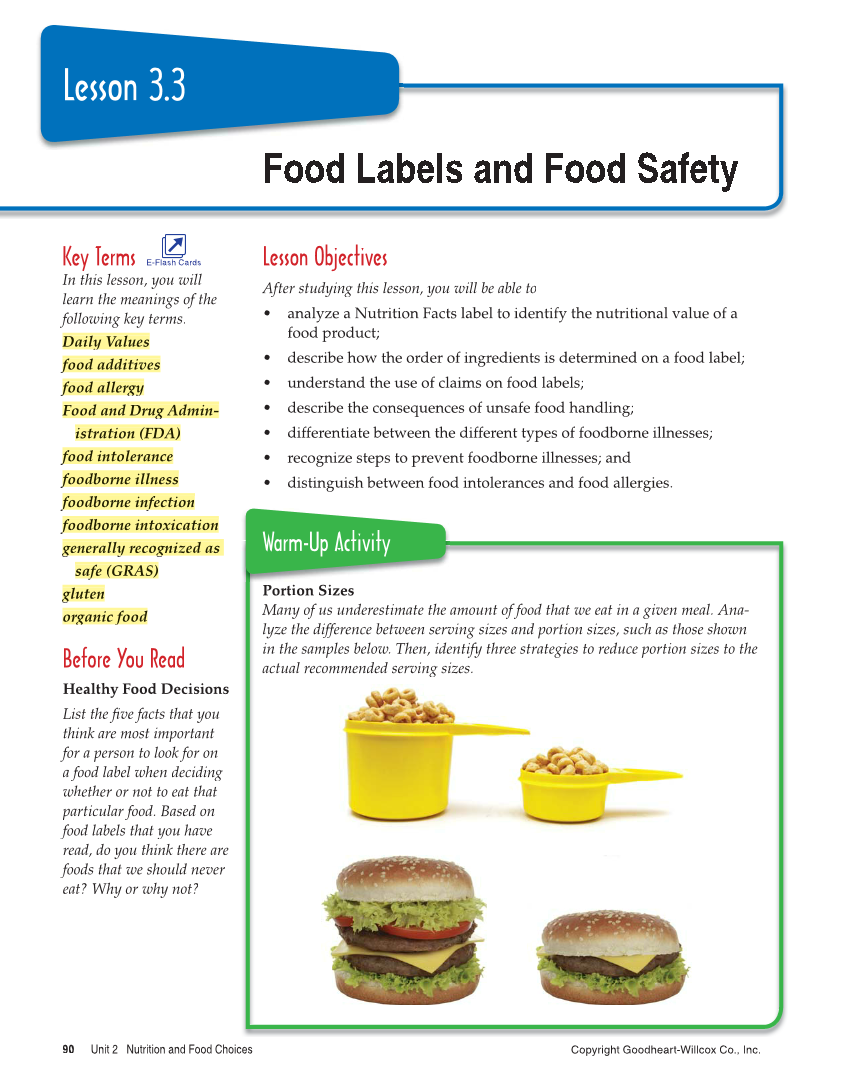90 Unit 2 Nutrition and Food Choices Copyright Goodheart-Willcox Co., Inc. Lesson 3.3 Key Terms In this lesson, you will learn the meanings of the following key terms. y Dai ly Values food additives f ood additive s food allergy f ood allergy Food and Drug Admin- F ood and Dru g Admin - istration (FDA) food intolerance f ood intoleranc e foodborne illness f oodborne illnes s foodborne infectionnectiof f oodborne in foodborne intoxicationn f oodborne intoxicatio generally recognized as generally recognized as safe f (GRAS) gluten gluten food org g anic f Before You Read Healthy Food Decisions List the fi ve facts that you fi think are most important for a person to look for on a food label when deciding whether or not to eat that particular food. Based on food labels that you have read, do you think there are foods that we should never eat? Why or why not? Lesson Objectives After studying this lesson, you will be able to • analyze a Nutrition Facts label to identify the nutritional value of a food product • describe how the order of ingredients is determined on a food label • understand the use of claims on food labels • describe the consequences of unsafe food handling • differentiate between the different types of foodborne illnesses • recognize steps to prevent foodborne illnesses and • distinguish between food intolerances and food allergies. Warm-Up Activity Portion Sizes Many of us underestimate the amount of food that we e eat in a given meal. Ana- lyze the difference between serving sizes and portion sizes, s such as those shown in the samples below. Then, identify three strategies to o reduce portion sizes to the actual recommended serving sizes. E-Flash Cards
